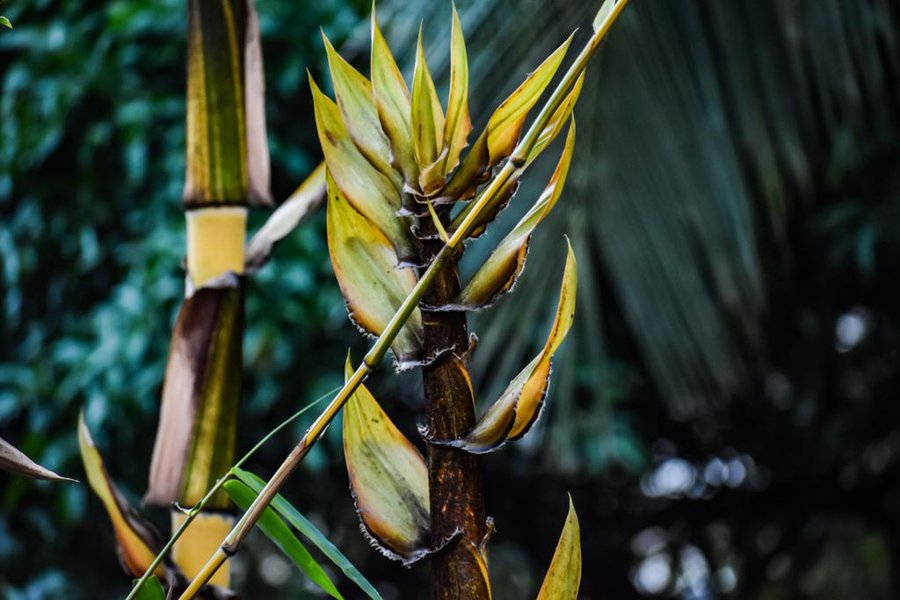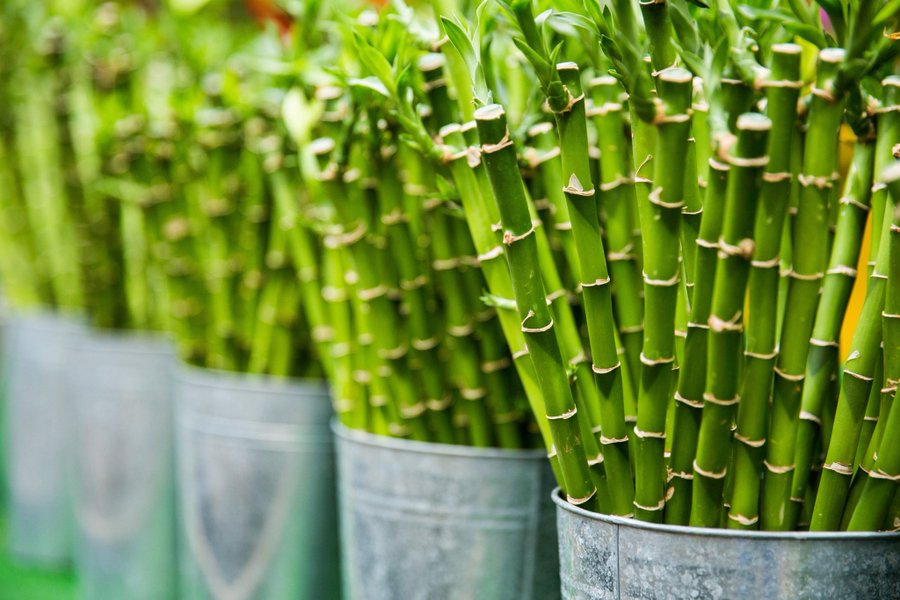Water is an important natural growth enhancer for propagating bamboo rhizomes, culm cuttings and seeds. Before propagating new cutting and seeds, it is important to soak them in water.
Hydrated cutting and seeds grow faster because water naturally triggers germination in plants and seeds.
How to propagate bamboo in water
Step 1: Cut the new growth (bamboo shoots and rhizomes tips) at a 45-degree angle with a sharp knife or a pair of secateurs.
Allow for two nodes and two internodes. Be careful not to move the new shoots too hard because they are tender and can break easily.
Step 2: Seal the ends of cuttings with grafting wax or melted candle wax to prevent the cuts from rotting.
Step 3: Place the cuttings in a pot of distilled water (or rainwater) and leave it in a well-lit site until new roots appear. Change the water every other day.
Do not use chlorinated water. As soon as the roots grow longer, move them to plastic pots or containers.
Step 4: Lay the bottom of 20cm (8 inches) pots with pebbles or broken ceramic pots to stop soil from falling out under the pot and improve drainage.
Fill the pots with a potting mix, or loam soil. Make a hole 5 – 10cm and plant the cutting at depth into the soil. Careful not to destroy the new roots.
Step 5: Stabilise the new bamboo plants by tying them to bamboo sticks with strings. Move them to a partly shaded location, away from windy sites.
How to propagate Lucky Bamboo in Water, Gravel and Soil
Lucky bamboo is not a bamboo plant from the grass variety, it is from a different family. It is a popular house plant used in Feng Shui.
It generally grows by stem propagation.
The cuttings will thrive in water, soil and gravel. In this case, we’ll use water as the propagating medium.
Step 1: Cut lucky bamboo stem 10cm to 15cm long.
Step 2: Put cuttings in a vase or clear container.
Step 3: Fill the vase with distilled water, do not use tap water.
Step 4: Set aside in a well-ventilated location where there is good indoor light.
Finally, check regularly until you see signs of growth.
Top tip. Always use distilled as they are free from chlorine and chemicals which are the main causes of rotting roots, yellowing of leaves and browning of stems.
What is the difference between propagating and growing lucky bamboo plants? Take a look at the top 10 questions many lucky bamboo growers ask every day.
Why propagate bamboo in Water?
Propagating bamboo plants and lucky bamboo in water promotes the growth of the seeds and cuttings.
Related article: How to Propagate Lucky Bamboo in Water



